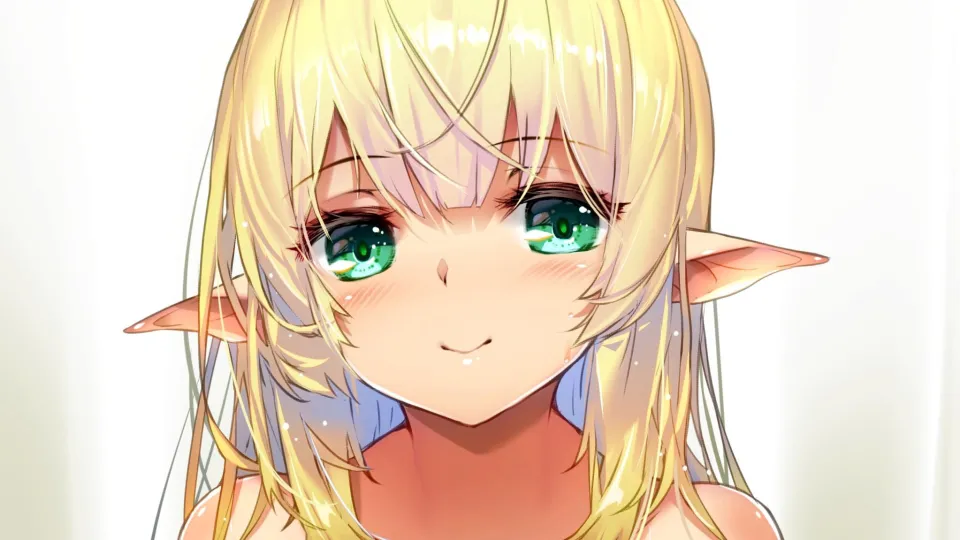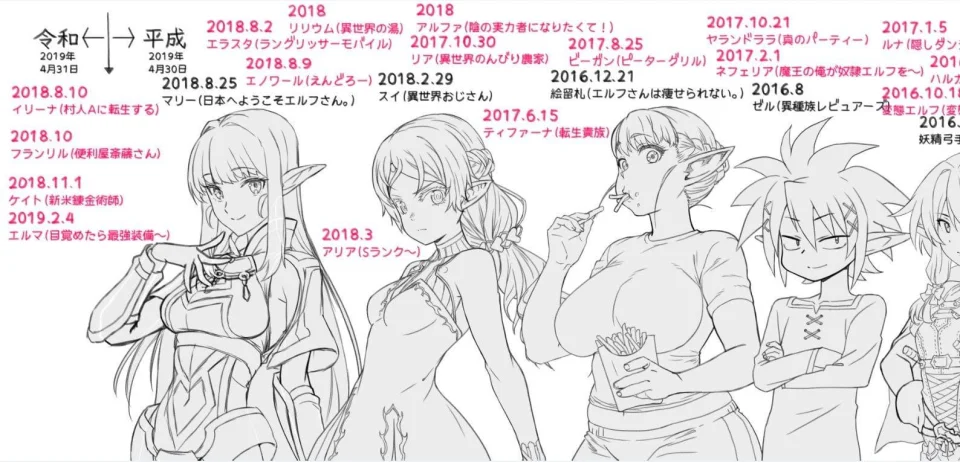This is how elves have evolved in anime

Prominent Twitter artist "ダテナオト (@datenaoto2012)" has captured the attention of the otaku community by compiling a stunning image gallery that presents the evolution of elves in the anime industry from 1986 to the present day. This project has generated a great deal of interest among anime fans, who have praised the artist's meticulous work in highlighting the diversity and charm of these elven characters over time.
From the earliest examples of elves in Japanese animation to more contemporary depictions, the gallery offers a fascinating look at how these characters have evolved over the course of nearly four decades of anime history. From classic elf warriors to elegant royal nobles to mysterious sorceresses and fearless adventurers, the gallery provides a comprehensive look at the rich variety of roles and personalities elves have played in anime over the years.
[As in any other Japanese medium, the timeline is read from right to left]
Deedlit (Record of Lodoss War) 1986; Ruu (Elf 17) 1985; Elf (Sorcerian) 1987; Lorien (Monster Maker) 1988; Arshes Ney (Bastard!!) 1988; Alician (Sword World) 1988

Lu (Wizardly Gaiden) 1989; Rumy (Fortune Quest) 1989; Rose (Dragon Quest IV) 1990; Mail (Popful Mail) 1991; Wendy (Shining Force) 1992; Milfa (Elven Bride) 1993; Lenifill (Adventure of Lenifill) 1994

Marlene (Dragon Knight 4) 1994; Celsia (Those Who Hunt Elves) 1994; Kacche (Lord of Lords Ryu Knight) 1994; Lucia (Dungeons & Dragons: Shadow over Mystara) 1994; Jendo (Toki no Daichi) 1996; Elise (Romance Is in the Flash of the Sword II) 1999

Elwing (Shining Tears) 2004; Tiffania (The Familiar of Zero) 2006; Marielle (Log Horizon) 2010; Myucel (Outbreak Company) 2011; Aura (Overlord) 2012; Elf (Dragon's Crown) 2013; Emilia (Re:ZERO) 2014

Sylphiette (Mushoku Tensei) 2014; Marcille (Delicious in Dungeon) 2014; Tuka (GATE) 2014; Shera (How NOT to Summon a Demon Lord) 2014; Kokkoro (Princess Connect!) 2015; Menel (The Faraway Paladin) 2015; High Elf Archer (Goblin Slayer) 2016

Zel (Interspecies Reviewers) 2016; Elfuda (Plus-Sized Elf) 2016; Suzailgillazegallnelbuzegillreagranzelga (Uncle From Another World) 2018; Marie (Welcome to Japan, Ms. Elf!) 2018

Elda (Otaku Elf) 2019; Karla (Don't Hurt Me, My Healer!) 2019; Frieren (Frieren: Beyond Journey's End) 2020; Dinneluth (Orcsen Oukokushi) 2024; Rosalinde (Unicorn Overlord) 2024

Elves are mythical creatures that have fascinated mankind for centuries, and their appearance in literature dates back to ancient times. However, it's impossible to talk about the popularity of elves without mentioning the lasting impact of J.R.R. Tolkien and his masterpiece "The Lord of the Rings." Tolkien is widely recognized as one of the most influential writers in the fantasy genre, and his depictions of the Eldar, or elves, have left an indelible mark on the modern perception of these mythical beings.
Tolkien's influence on the popularity of elves in anime is undeniable, as his work has inspired numerous anime and manga creators to incorporate elements of elven mythology into their stories. From the noble and wise elves of Middle-earth to the agile and brave warriors, Tolkien's legacy has contributed greatly to the diversity and appeal of elves in popular culture and the anime industry.
Source: @datenaoto2012 en Twitter

